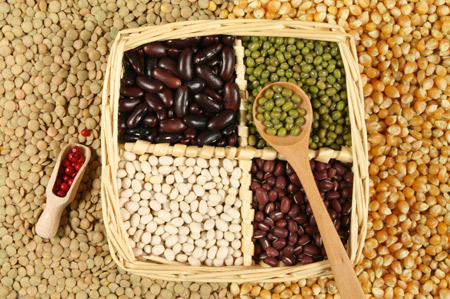 (Corn and Soybean Digest) – New-crop soybean futures prices have plunged from $12.50 per bushel in late June to $11 or below in three weeks. They closed down 9 cents at $10.85 Friday. And there’s no sign they will turn around anytime soon, says Jim Hilker, Michigan State University Extension ag economist.
(Corn and Soybean Digest) – New-crop soybean futures prices have plunged from $12.50 per bushel in late June to $11 or below in three weeks. They closed down 9 cents at $10.85 Friday. And there’s no sign they will turn around anytime soon, says Jim Hilker, Michigan State University Extension ag economist.
For those farmers who haven’t priced much of their beans, “they should consider pricing some should the price get near $11.50,” Hilker says.
In last Monday’s weekly crop update, USDA’s forecast average yields of 45.2 bushels per acre from 84.8 million planted acres. That puts more pressure on prices as the peak growing season hits high gear, Hilker says.
Forecasters have also indicated that U.S. soybeans were 72% good to excellent. Good weather forecasts favor continued crop development. Brugler Marketing and Management notes that according to forecasts, hot weather in the Midwest next week should not affect the crop.
“Traders seem convinced that production will outpace demand and that export sales will have to be much better in order to change that,” adds Bret Crotts, analyst for Schwieterman Marketing.
Hilker says he believes cheaper bean prices will cause higher crushing and export numbers, but likely not enough to reduce stocks substantially. He projects 449 million bushels of ending stocks, 12.9% of use, and a cash price of $9.75. “It is hard to project cash prices over $10 this fall given these numbers,” he says.
“Today in Michigan, you can get $10-$10.50 for new-crop soybeans. But it’s hard to tell people what they ought to do now (after prices have decreased). At this point, even a mini-rally in futures prices should be considered for further sales.”
Hilker says it seems harder for farmers to pull the trigger on grain sales with today’s prices much lower than those that saw beans in the teens and corn at $6 or more. “I talked to one elevator recently,” Hilker says, “and not very many farmers had forward prices beans. But the ones who did sold a larger percentage of their anticipated crop.”
He says hindsight doesn’t help, when noting that higher prices were available for sales much of this year. “There could still be some rallies,” Hilker says. “We have a lot of growing season left. We can still get too much moisture in some places (which can reduce yield projections).”
But thus far, there are new signs of higher prices.




